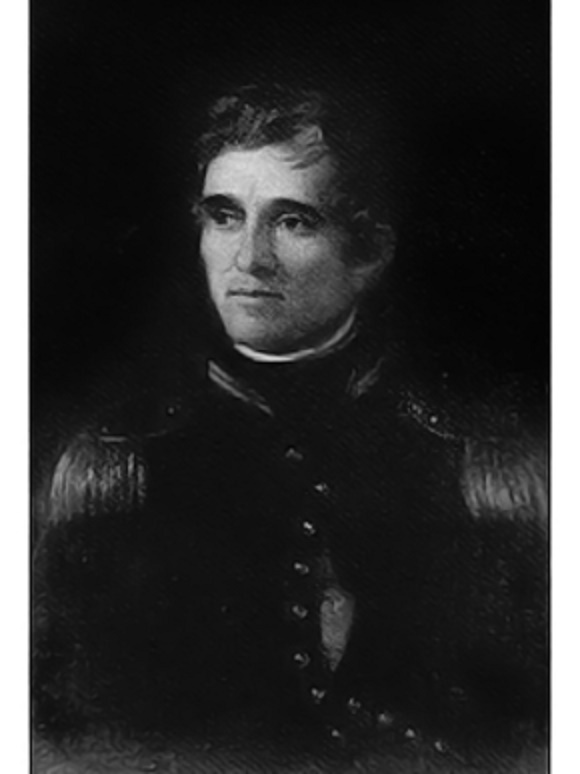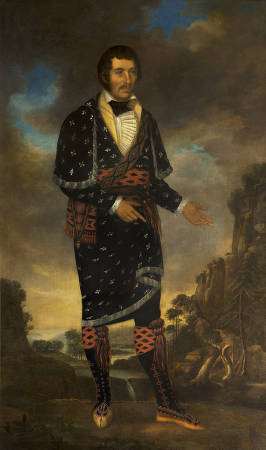Excerpt from ALABAMA FOOTPRINTS: Confrontation (Story continued below)
Autosee Battle By Georgians
Red Eagle sent two bodies of his warriors to harass the borders of the future state of Alabama, one force threatened Tennessee and the other sought to find some vulnerable point on the Georgia frontier. When the call was made by General Claiborne upon Tennessee for assistance, a similarly earnest appeal was sent to Georgia, and the response from that state was equally prompt.
Jackson’s advance with an overwhelming force and his vigorous blows at Tallaseehatchee and Talladega compelled the Creeks to abandon their designs upon Tennessee and stand upon the defensive. The other column, which threatened Georgia, was met in like manner by General Floyd, and with like results.
See all books by Donna R Causey
Floyd’s army from Georgia consisted of nine hundred and fifty militiamen and four hundred friendly Indians, part of them being Cowetas under command of Major McIntosh, one of the half-Native Americans whom High Head Jim had planned to kill and the rest were commanded by Tookabatchas under Mad Dragon’s son.
Floyd was better equipped with some small pieces of artillery than Jackson had been in his first battles. Having learned that a large force of the Creeks was at High Head Jim’s town, Autosse, on the south-east side of the Tallapoosa River, about twenty miles above the point at which that stream unites with the Coosa, General Floyd marched against them in the latter part of November.

Eggleston states that Floyd crossed the Ockmulgee, Flint, and Coosa rivers under the guidance of a Jewish trader named Abram Mordecai, and arrived in the neighborhood of Autosse early in the morning on the 29th of November.
His plan of battle was the same as that which Coffee had adopted at Tallaseehatchee (Tallushatchee), and Jackson at Talladega. He planned to surround the town and destroy the fighting force within, but their scheme failed.
“In the first place, McIntosh and Mad Dragon’s son were ordered to cross the river and cut off retreat to the opposite shore, and they failed to do what was required of them. Whether this was due to the unforeseen difficulties of crossing, as the Native Americans alleged; or to the reluctance of the Red Sticks to swim the river on a cold, frosty morning, as some historians say; or to a failure of their courage, as was charged at the time —there are now no means of determining, and it is not important. It is enough to know that they did not cross the river as ordered, and hence when the attack was made the bank of the stream opposite the town was unguarded.”
The real position and strength of the Red Stick force had been miscalculated, and when this was discovered, General Floyd was obliged to alter his plans.
See all books by Donna R Causey
“The advance was made as soon as there was sufficient light, on the morning of the 29th of November, with Booth’s battalion on the right, Watson’s on the left. The flanks were guarded by riflemen, and Thomas with his artillery accompanied Booth’s battalion. Booth was instructed to march until he could rest the head of his column upon the little creek at the mouth of which the town stood, while Watson was to stretch his column around to the left in a curve, resting its left flank upon the river just below the town. If this could have been done as intended, and the friendly Indians had occupied the opposite side of the river, the encircling of the place would have been complete; but besides the failure of the Indians another difficulty stood in the way. ”
Floyd realized that instead of one town there were two, and the second was lying about a quarter of a mile further down the river, immediately in rear of the position to which Watson had been ordered.
“General Floyd sent Lieutenant Hendon with Merriweather’s riflemen, three, companies of infantry and two of dragoons to attack the lower town, while he threw the remainder of the army, now reinforced by the friendly Indians under Mad Dragon’s son and Mcintosh, against the larger upper town.”
The fighting began about sunrise, and quickly became severe. The prophets made the place sacred ground, and they had assured the warriors that any white force which should attack them would be utterly exterminated, so the Red Sticks resisted the attack with terrible determination, contesting every inch of the ground which they believed to be sacred.
Soon after the battle began, the artillery—an arm which was particularly dreaded by the Creeks with something of superstitious horror—was brought forward and unlimbered. Its rapid discharges soon turned the tide of battle. Then Major Freeman with his squadron of cavalry charged and broke their lines.
Floyd’s infantry pressed the Red Sticks, while the friendly Indians who had now crossed the creek cut off retreat up the river, leaving the broken and flying Creeks no road of escape except across the river.
“At nine o’clock both towns were in flames, and there was no army in Floyd’s front. He was victor in the action, and his success in attacking a sacred stronghold was certain to work great demoralization among the superstitious Creeks; but prudence dictated a retreat nevertheless.”
The country round about was populated with Native Americans, and the force which fought at Autosse although broken was not destroyed. It was certain that if the army remained in the neighborhood it was in danger of being beaten by the superior force which the Creeks could speedily muster.
Additionally, Floyd had only a scanty supply of provisions, and his base of supplies was sixty miles away, on the Chattahoochie River. He marched his men as soon as he could bury his dead and arrange for the care of his wounded, of whom he was himself one.
On the return march, Red Sticks attacked Floyd’s rear within a mile of their burned town on the day of the battle. However, their numbers were not sufficient to enable them to fight for an extended period.
In the battle of Autosse Floyd lost eleven white men killed and fifty-four wounded, besides some losses among his friendly Indians. The exact number of slain warriors of the enemy was not ascertained, but it was estimated at about two hundred.
ALABAMA FOOTPRINTS Confrontation: Lost & Forgotten Stories (Volume 4)
is a collection of lost and forgotten stories that reveals why and how the confrontation between the Native American population and settlers developed into the Creek-Indian War as well as stories of the bravery and heroism of participants from both sides.
Some stores include:
- Tecumseh Causes Earthquake
- Terrified Settlers Abandon Farms
- Survivor Stories From Fort Mims Massacre
- Hillabee Massacre
- Threat of Starvation Men Turn To Mutiny
- Red Eagle After The War





